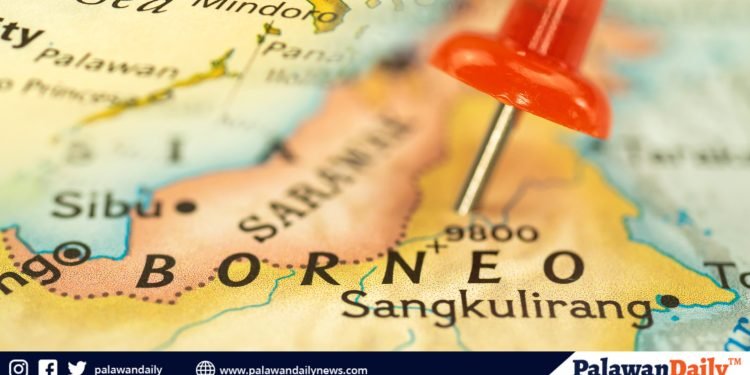The president of Labuan’s Chamber of Commerce (LCC) has recommended reconnecting Palawan and the Federal Territory of Labuan, an island 10 kilometers off northwestern Borneo, through business and trade to spur economic growth and elevate Palawan to be a major port hub in the Philippines.
LCC President Daniel Doughty, who is a distinguished professional known for his expertise in strategy, logistics, and public relations, has a diverse background including work in tourism, conservation, blockchain technology, logistics, oil and gas, and entrepreneurship, has proposed the revitalization of sea route and trade between Palawan and Federal Territory of Labuan, said, “Enhancing maritime connectivity between Palawan and the ports on the western side of Borneo, including Brunei, Sepanggar, and Bintulu via Labuan, offers substantial advantages. This improved network solidifies the western Borneo region as a crucial partner in Palawan’s evolution into a major port hub. This development will serve not only the western regions of the Philippines but also the neighboring islands, significantly boosting the economic and logistic capacities of these areas.”
He further emphasized that both Labuan and Palawan have bright prospects that could change the current commercial setting.
“To leverage their geographical positions, Labuan and Palawan must innovate and strategize in the transshipment sector. These islands hold immense potential to reshape maritime trade routes and strengthen their economic standing in the region. The focus is on enhancing maritime connectivity and trade, which could alter the economic landscape of the region,” Doughty proposes.
Doughty prepared a paper titled, “Developing Innovative Transshipment Strategies and Reestablishing the Labuan – Palawan Sea Route to Boost Labuan and Palawan Economy and Maritime Regional Importance,” which he will be presenting to various stakeholders and partners to enhance collaboration and establishing the proposed sea route.
His paper highlights the urgent need to re-establish and rebuild transshipment activities between Labuan and Palawan. Revitalizing these routes is crucial for enhancing regional trade efficiency. This initiative could significantly impact the economic development of these strategically located islands, potentially transforming them into pivotal players in Southeast Asian maritime trade.
Doughty further explained that in the realm of international trade, the practice of barter, also referred to as transshipment, and holds a significant place, particularly in Southeast Asia. His paper looks into the nuances of this trade, emphasizing its historical roots, evolving methods, and current dynamics in the region, especially between Labuan and the Philippines.
He said that transshipment has been thriving since the early 1960s, primarily between Labuan and the Philippines. This long-standing commercial interaction reflects a rich history of maritime trade that has shaped the economic landscapes of both regions.
“A distinguishing characteristic of transshipment in this region is the use of wooden vessels, categorized as nonconventional vessels. Unlike modern container ships, these traditional boats, known as “kumpit” in Labuan and “lansa” in the Philippines, are a testament to the region’s maritime heritage. The process involves break-bulking from containers at the transshipment port, followed by loading onto these wooden vessels, a method that intertwines traditional practices with contemporary trade needs,” Doughty articulated.
Palawan’s location is considered geographically detached from other provinces in the country, which results in fuel cost disparity which is an economic burden to consumers in the island.
Doughty observed that there’s a big difference in fuel prices between Palawan and Manila.
“This price difference is primarily due to the higher logistical costs associated with transporting fuel to the island region. Consequently, this situation imposes an economic strain on local businesses and consumers in Palawan, who face escalated transportation and operational expenses,” he said.
“These increased costs are largely due to the logistical challenges of distributing goods across the vast and fragmented geography of the Philippines,” Doughty explained.
He proposes that decision-makers, including political leaders, and business and industry players in Palawan should also work hard to attain this plan, which he described as game-changers for Palawan and Labuan.
As the LCC president, Doughty said that he wants a commitment from Palawan confident that they can do it together, and he wants Palawan and Labuan should dance together, because it takes two to tango.
“To actualize this vision, it is imperative to meticulously address the existing challenges and effectively capitalize on the distinctive strengths of Labuan and Palawan. In doing so, these islands have the potential to evolve into pivotal maritime hubs, thereby reshaping the dynamics of regional maritime trade and establishing a new era of economic prosperity,” he hopes.
The island province of Palawan is part of subregion formed in 1994 by four neighboring Southeast Asian countries of the Philippines, Malaysia, Indonesia and Brunei Darussalam known as the Brunei Darrusalam-Indonesia-Malaysia-Philippines East Asia Growth Area (BIMP-EAGA) with the goal of increasing trade, investment and tourism in the region.
Palawan Halal Development Council Inc (PHDCI) CEO Said Alih Sha welcomed this development and emphasized that this will provide both economic and employment opportunities for the locals especially in Halal industries, he said that they can also facilitate workers who wish to work in neighboring, Malaysia. PHDCI has also partnered with Technical Education and Skills Development Authority (TESDA) for the offering of Halal as part of technical vocational educational and training (TVET).
Raymundo Imaysay, manager of the Palawan Agrarian Reform Cooperatives Federations (Parcofed), an aggrupation of farmers coop in Palawan said that this development will open doors to substantial opportunities for the island province of Palawan and its island municipalities. Imaysay is engaged in rice farming, rice milling and trading.




















Discussion about this post